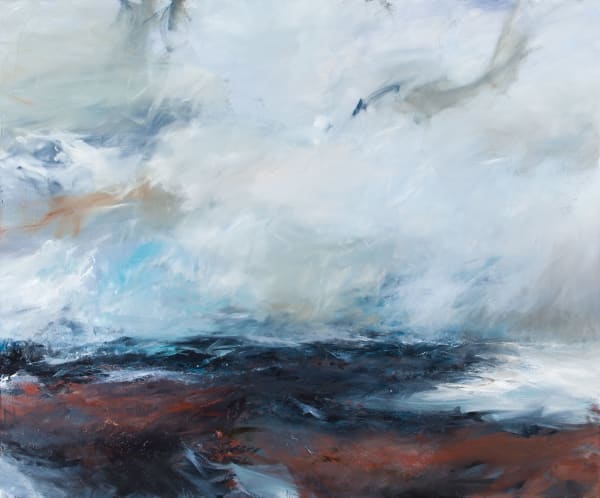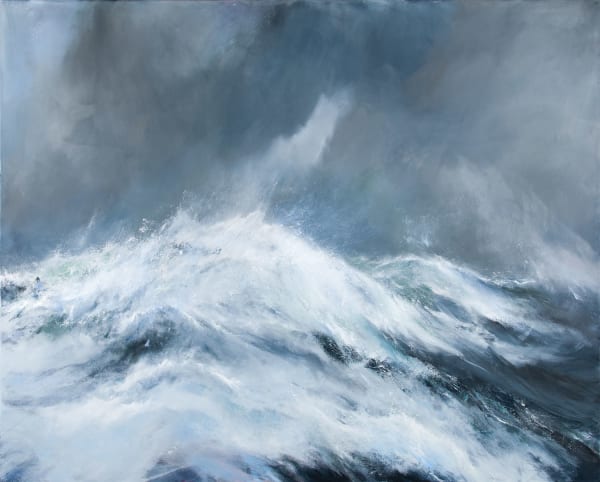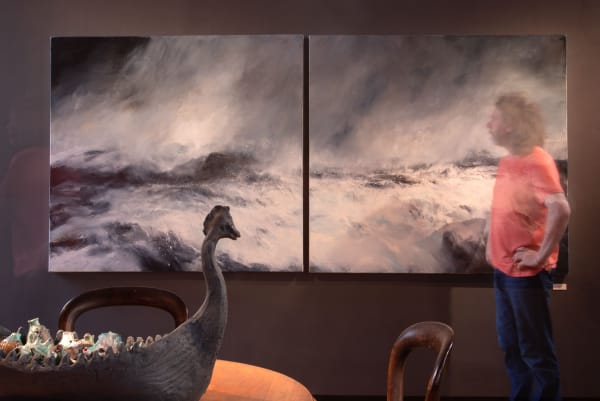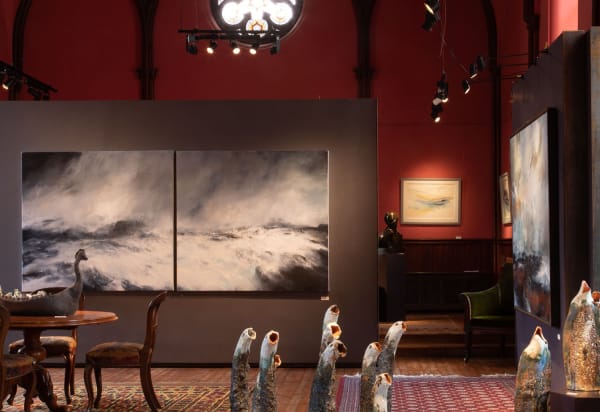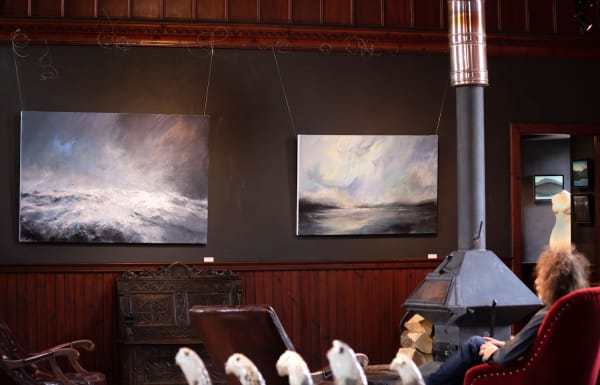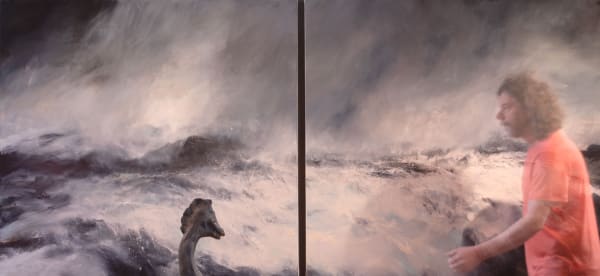JANETTE KERR: Krotli
Krotli: agitated: choppy (with small waves breaking against each other): a krotli sea.’ South Shetland
The bible says the first word was ‘God,’ but in the north, it was probably a weather-word: kwikn, krotl, dask, drooklin, innsog, pusk, skuder, gruggie, snarr. These are all Shetland words that describe the intimacies of what blows in. Maybe weather – from storms to sun – with its ultimate power over us, is akin to ‘God’ but just using another one of her many names.
Kilmorack Gallery’s latest exhibition brings together Janette Kerr and Peter Davis in a duo of shows - ‘Kwikn’ and ‘Krotli’ – which, like the weather-words, show what it means to the people that live through northern storms. If you hear the ‘swaa,’ that is the sound of the sea heard from a distance. When you are in it, in the eye of the storm, the ‘megin,’ you feel the ‘skelter,’ a ‘Katrisper.’ The gale is around you. Eventually, there is a ‘lunk,’ a calming of the weather. These words and paintings describe power and awe, and the wet and cold reality of the romantic sublime, and they take us closer to forces which will outlast everything.
This weather obsession has been part of the lives of Janette Kerr and Peter Davis for their entire working lives. Kerr travels between studios in the south of England and Brindinster on Shetland, and Peter Davis works from his sea-facing home at Silwick on the western fringes of the island. The two artists approach painting in different ways. Davis is slow and controlled. He moves pigment and water around paper, mimicking natural processes studied from his clifftop perch. In his paintings, pigment drops like sediment. They have been laid there by Davis’s controlled washes. Paper, Davis finds, is a special medium because the elements (water, pigment and paper) combine to become one and there is something special in this deep embedding. He seeks (and finds) abstractions and compositions which create the feeling of wide sea and sky, because they are a microcosm of it.
Kerr works in oil and often on a large scale. The largest canvas in this exhibition is 3m long; and it pulls you into it, drenching the viewer in cold and salty ocean. It conjures how, when in a small boat in a big sea, you are part of the movement of water. You rise and fall with it. There are big movements that threaten to sink or save the boat and there are small waves that drench you in a mist (a 'brenna.') Kerr is interested in the science of waves as well as the aesthetics, and the results are powerful. It is no surprise that these sea paintings are so sought after and she is considered one of the finest painters of the sea around.
Here are some weather-words…
Alikrogi – a weakly animal that cannot stand the cold.
Bladd – a very large raindrop.
Blashey wadder – wet and unsettled weather.
Blooter – a wet mass or jelly.
Brenna – a fine mist-like spray from heavy breakers.
Brennek – a mock-sun.
Dask – a dense haze of fog.
Dofnin – abatement of storm and rough weather.
Duffin – moderating in weather.
Fjora – foreshore
Flinterkin – (1) a very dry cowpat. (2) a light snow shower.
Gruggie – dim, dark and threatening.
Gven – an improvement in the weather
Haagle – boundless; implacable; remorseless
Hoolan – a strong gale
Hoss – the muffled murmur of lapping waves on the shore in calm water.
Innsog – the suck of the sea towards the land.
Katrisper – a very strong gale
Kwal – to lull, to abate (applied to wind)
Livd – a calming, abating of bad weather.
Lenfter – of the sky; to clear and form a bright patch.
Glet – mild weather.
Gruggie -
Lunk – a calming, clearing of the weather.
Maegins – the heart or depth (especially of the night.)
Megin – the centre (especially the night)
Org – oppressive heat (it is mostly described as oppressive.)
Platt – perfectly calm.
Pusk – to come in gusts of increasing violence.
Rullyo – a heap of stones on a beach thrown up by the sea.
Runk – dry weather.
Skelter – a great commotion in the sea.
Skudder – driving, thrashing rain.
Snarr – turn of the tide.
Swaa – the noise of the sea heard from a distance.

